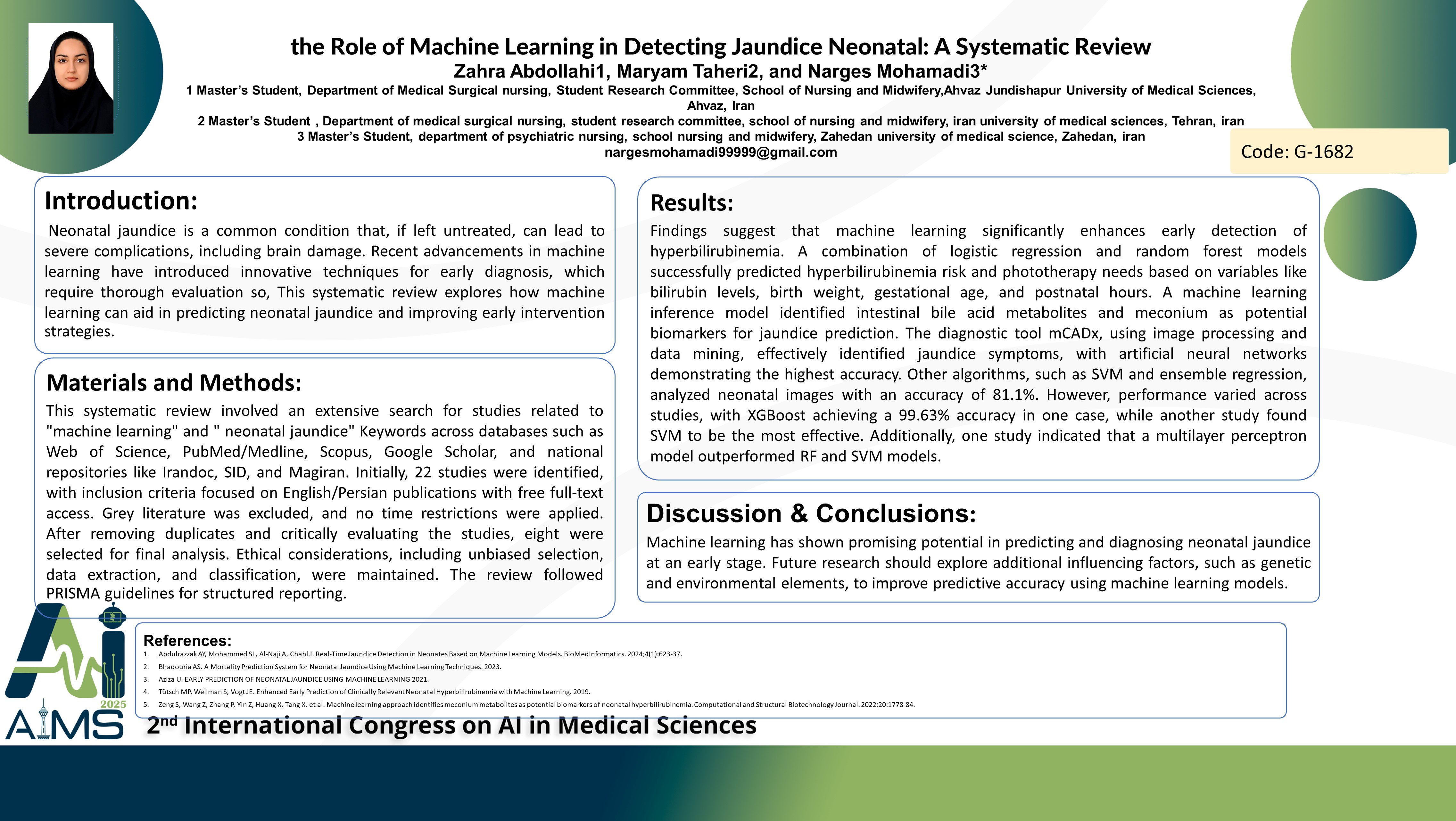نقش یادگیری ماشینی در تشخیص زردی نوزادی: یک مرور نظام مند
کد: G-1682
نویسندگان: Zahra Abdollahi ℗, Maryam Taheri , Narges Mohamadi *
زمان بندی: زمان بندی نشده!
برچسب: دستیار مجازی هوشمند
دانلود: دانلود پوستر
خلاصه مقاله:
خلاصه مقاله
Background and aims: Neonatal jaundice is a common condition that, if left untreated, can lead to severe complications, including brain damage. Recent advancements in machine learning have introduced innovative techniques for early diagnosis, which require thorough evaluation so, This systematic review explores how machine learning can aid in predicting neonatal jaundice and improving early intervention strategies. Method: This systematic review involved an extensive search for studies related to "machine learning" and " neonatal jaundice" Keywords across databases such as Web of Science, PubMed/Medline, Scopus, Google Scholar, and national repositories like Irandoc, SID, and Magiran. Initially, 22 studies were identified, with inclusion criteria focused on English/Persian publications with free full-text access. Grey literature was excluded, and no time restrictions were applied. After removing duplicates and critically evaluating the studies, eight were selected for final analysis. Ethical considerations, including unbiased selection, data extraction, and classification, were maintained. The review followed PRISMA guidelines for structured reporting. Results: Findings suggest that machine learning significantly enhances early detection of hyperbilirubinemia. A combination of logistic regression and random forest models successfully predicted hyperbilirubinemia risk and phototherapy needs based on variables like bilirubin levels, birth weight, gestational age, and postnatal hours. A machine learning inference model identified intestinal bile acid metabolites and meconium as potential biomarkers for jaundice prediction. The diagnostic tool mCADx, using image processing and data mining, effectively identified jaundice symptoms, with artificial neural networks demonstrating the highest accuracy. Other algorithms, such as SVM and ensemble regression, analyzed neonatal images with an accuracy of 81.1%. However, performance varied across studies, with XGBoost achieving a 99.63% accuracy in one case, while another study found SVM to be the most effective. Additionally, one study indicated that a multilayer perceptron model outperformed RF and SVM models. Conclusion: Machine learning has shown promising potential in predicting and diagnosing neonatal jaundice at an early stage. Future research should explore additional influencing factors, such as genetic and environmental elements, to improve predictive accuracy using machine learning models.
کلمات کلیدی
Machine Learning, Jaundice, Neonatal, Systematic Review
